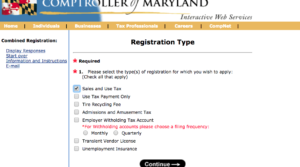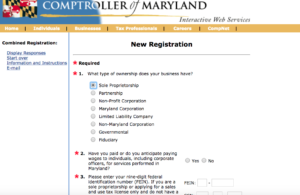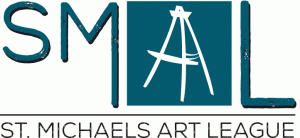Online Art Instruction – Free Resources
Submitted by Walter Urbanek
Disclaimer: Blogs are the opinion of the author, not necessarily the St. Michaels Art League
Streamline Art Videos- “Artist of the Day” series, including videos featuring such artists as: Nancy Tankersley, Suzie Baker, Thomas Schaller, Charlie Hunter, Christine Lashley, Lori Putnam and many others. These are hosted by Eric Rhoads of Plein Air Magazine and are shortened one-hour versions of their full offerings.
Oil Painting with Zufar Bikbov- This artist has been a frequent Plein Air Easton participant. His many videos are entertaining and highly informative. Several SMAL members attended Zufar’s workshop at Tilghman as part of this year’s PAE. He also hosts the website “ConfidentArtist.com”.
In the Studio Art Instruction– A “Quick Tip” series hosted by Diane Mise. These are short topic specific instruction videos which feature hundreds of practical tips such as: Avoid Over -stroking, Good Color Harmony, Painting Clouds, Notan- How and Why, What About Liquin, and many, many others.
The Forger’s Masterclass– A highly entertaining British mass media type series on how to paint like Van Gogh, Monet, Hopper, Sargent, and others by John Myatt, a reformed convicted art forger. Mix a cocktail and enjoy!
See the Academy Art Museum’s Members Show
George Hamilton gave a thorough writeup of the Academy Art Museum’s Members Show, which included works of a number of SMAL members. Take a look at his review here.
Don’t forget to see the show which is open until January 13, 2019.
Is your Art a Hobby or Business?
David Lawton handout

May 21, 2018
It has been my experience that many artist who work from photos search for the perfect image, then once found proceed to faithfully copy it. While this approach may be perfectly fine for some, it is not the approach that I believe leads to the most rewarding artwork. Today, I plan on discussing some of the reasons I make this claim as well as offer ideas on how to do things differently.
When looking at any subject people not only see what the camera records but we see it through the filter of our brain and past experiences. That is one of the many reasons we are often disappointed with the photos we take. We remember far more color and far less detail than the typical photo shows. We naturally select whatever interest us and dismisses all superfluous objects that often clutter the picture. By far the most important difference is that we see with two eyes and the camera only has one lens. Seeing with two eyes allows us to see volume hence we experience the world three-dimensionally.
So how does one break away from blind copying? One sure fire way is to always use two or more photos when you paint. This alone will force you to use your creative mind to merge the two images into one image that is better than either image by itself. We often see a photo that we would paint if only this or that aspect was different. As artist when painting, we use all our past experiences and rearrange, add objects, change shapes, color and numerous other things to create visually more interesting paintings. Another method is to convert your source material to black and white then paint it in full color.
Finally, remember if you want the viewer to be excited by your artwork the first and most important step is that you are visually excited by what you are painting. Excitement begins with what and how you choose to paint your subject.
How to obtain a Maryland Tax number
-The state of Maryland requires collection and payment of 6% sales tax on all art sales. So when SMAL conducts a show and sale, it would be required to collect the sales tax from buyers and report them on a business sales and use tax filing.
However, as a non-profit 501-c(3) corporation, we are limited in our ability to act as a merchant or art gallery conducting regular retail sales. So, although we collect the sales tax from buyers, we pass on the collected tax along with the price of the art, less a commission, to the artist. In essence, the artist is actually doing the retail sale, not the Art League, which is essentially acting as a cashier for the artist.
It is up to the artist then to report the art sale and pay the sales tax to the state. To maintain our pass-through status, we are to have a record of the sales tax number for the artists in the show, much like a firm doing wholesale has to have a sales tax number of the retailers who purchase from him.
Hence, we request a sales tax number when artists register for a show.
Whenever you sell your work, sales tax should be collected and reported on the required forms (Unless you are selling it out of state). This would apply to any sales that you might have privately, through a library exhibit or other SMAL sponsored event in which you are dealing directly with the buyer.
How to get a Maryland Sales Tax Number.
These are obtained on line at the marylandtaxes.gov web site. You can also come up with a paper form to mail in. The web site is a dense forest of options and will test your determination to obtain a tax number. This multi-step process has succeeded in the past (you can see how we got there) or skip right to #6 – click here https://interactive.marylandtaxes.gov/webapps/comptrollercra/RegistrationType.asp and proceed.
- Go to marylandtaxes.gov on your browser
- Click Online Services in the top menu bar
- Click Business Taxpayer Online Services on the next screen
- Click Business Registration on the next screen
- Scroll to the bottom of the next screen and click Begin Registration
- This at last brings up Registration Type. Click Sales & Use Tax, and Continue

- On the next page, click Sole Proprietor, unless you have formed a legal corporation for your artwork.

- Fill in the rest of the form with the requested personal information.
Maryland State Arts Council Free Online Registry
The Maryland State Arts Council invites area artists to join its free online registry and, for those who sell their work through a Web site, to also opt into its Maryland Art Marketplace. Click here to see more.


